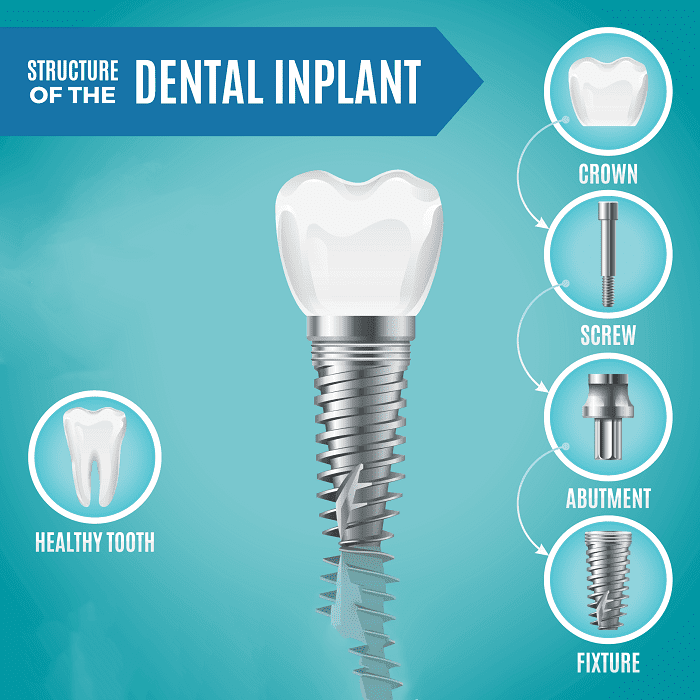If you lose one or more teeth, you can face a number of complications related to oral function, smile aesthetics, and further dental problems. Fortunately, your dentist can evaluate your smile and find a tooth replacement solution that will restore your smile in the wake of tooth loss. You can experience maximum benefits if you replace lost teeth with a dental implant.
However, not all patients can qualify for implant dentistry. Though if you do pursue this treatment, you can look forward to a lifetime of restorative dental benefits.
You can feel more confident in this procedure when you know more about this device. Read on to learn details about each component of a dental implant and the role they play in this tooth replacement treatment.

Implanted Anchor
The implant dentistry process begins with oral surgery to place the anchor of the dental implant into your mouth. The dentist will put the titanium post into the jaw below the gumline. You can receive as many anchors as needed in this one procedure.
It will take several months for the surgical sites to heal. During this time, the anchors will fuse with the jawbone. Then this will make for a solid, stable foundation that will ultimately support the rest of the implant fixture. Because of this fusion, dentists consider implant dentistry to be a permanent treatment.
The dentist will use X-ray imaging to examine your jawbone and gum structure and ensure you have enough bone and tissue there to support the anchor and the fusion process. If not, the fusion cannot happen successfully, and you will not sustain the implant. You might require graft surgery to build stability that might later support a device like this.
Abutment
Your dental implant will also feature an abutment piece. This bit of metal screws to the top of the anchor of the implant. It serves as a connection between the anchor below the gumline and the dental prosthetics that will go above the gums.
This component of the implant ensures the device will stay in place securely and comfortably so that you can complete oral functions like biting, chewing, and speaking without worrying about the implant slipping out of place. The reliable fit brings priceless confidence to this dental solution.
Dental Prosthetic
The final part of your dental implant is the prosthetic teeth. Depending on your unique dental needs, your dentist might use a crown, a bridge, or a full denture to replace your missing teeth.
The dental prosthetic will attach to the abutment, which holds these teeth in place. They can endure for about twenty years with proper care and maintenance. The dentist will build these prosthetic teeth on a custom basis for each patient.
This means that you can look forward to a beautiful and natural-looking finish with this treatment that will suit the size, shape, and color of your smile. Follow your dentist’s aftercare guidelines to ensure these fixtures last for as long as possible.
